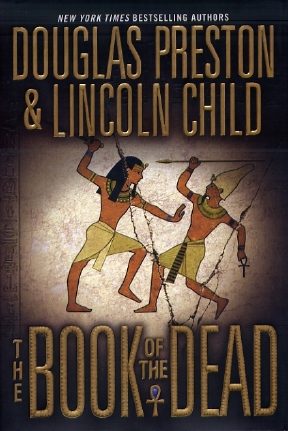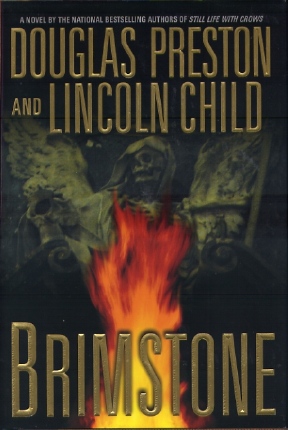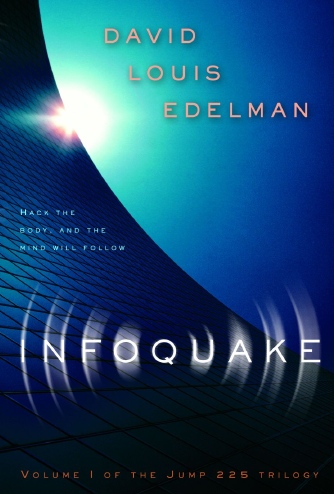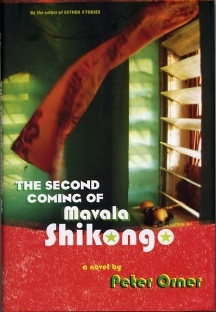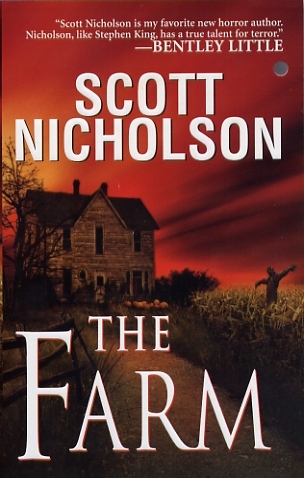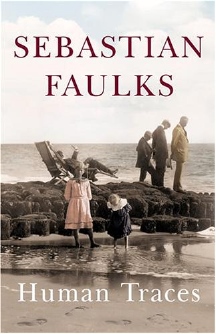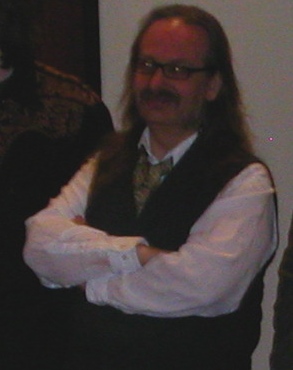|
|
|
This Just In...News from the Agony Column
|
06-09-06: Douglas Preston & Lincoln Child Close 'The Book of the Dead' |
||||||
Getting
the Order Right
So, scratch that one as a movie franchise. But Preston & Child were at least smart enough to see what was most valuable in their own novel, and that was Pendergast. He returned in a direct sequel to 'Relic', 'Reliquary', with more Jennifer Toth 'The Mole People'-inspired monster action. Pretty good stuff, or rather, very good fluff. Then, in 2002, they really dug into the meat of the matter and brought readers 'The Cabinet of Curiosities'. This book embodied the definition of summer reading hoot. Monsters, again, of course, are required, though they’re pretty sublimated here. Mostly, this is a lot of Natural History-style fun with Pendergast really getting a workout. You could just tell how much fun the authors were having, and the book was one of those that really rocked the house. In between, the writers each put out solo efforts that were of varying interest to me but never rose to the buy-it-and-read-it level. They also worked on a number of projects together; 'Mount Dragon' I read, but the rest of these passed by as well. I was vaguely aware that characters from some of these collaborations were creeping into the Pendergast novels, but you know, who can keep up with these guys? So I let it slide, and decided that I'd focus on the Pendergast novels. 'Still Life With Crows' was, however, something of a disappointment. Oh, I still loved to hang out with Pendergast, and his sidekick for the novel was equally engaging. But let me be clear about this. Don't set me up for a disappointing monster. After the critter in 'Relic', you can't, you just can't expect me to get thrilled about what was behind the dirty deeds in 'Still Life With Crows'. Sorry. That left the novel as a mixed bag for me, and that was that. Until now. 'The Book of the Dead' (Warner Books / Hachette Book Group ; May 30, 2006 ; $25.95) completes a trilogy I have yet to start, but the facts that a) There is a trilogy and b) This novel completes it, quite swiftly draw my attention back to these two purveyors of unadulterated good-times, Father's Day fiction. But there's something more here, something that is nearly as valuable as three books-worth of weird fiction. That would be Preston & Child's two-page note at the end of the book, a reading-order guide for their collaborative work. All I can say is: wow. Writers who listen to readers' questions. I'm very, very impressed. But before I get to that bit, I'm going back into the stacks to dig up 'Brimstone', the first in this trilogy. Hang on, let me timestamp this monumental event: 9:33:08 AM. 9:36:54 AM. Damn, that was fast, wasn't it? Went out to the garage and eliminated it, and then into the studio. I was pretty sure I knew where it was, but having gone and looked in that general vicinity yesterday, and not having found it, I thought it might have migrated, well, who the hell knows where? And having found 'Brimstone', now I'm ready to get to that page, that golden page of happiness. Reading order. I don’t know if others obsess about it as much as I, but some things matter, and reading order matters. Generally speaking, I prefer the most brain-dead and expedient reading order; order of publication. I think you really can't go wrong with this one. But. Sometimes you have to work around things, such as when you've got busy-bunny writers like Preston & Child. These guys produce. And since they produce these Pendergast novels that are at least pretty much worth your time, it's also worth your time to read 'em in the right order. So, do I tell the story first or give you the order first? Relic Reliquary The Cabinet of Curiosities Still Life, With Crows Brimstone (trilogy #1) The Dance of Death (trilogy #2) The Book of the Dead (trilogy #3) Guess that answers that question. Now let me spare you some of the trouble of picking up this book for those two oh-so-precious pages. You should pick up this book because you do have a drool cup to fill, don’t you? And what better way to vacate your mind of coherent thoughts than to fill it with literary serial killers, supernatural goings-on and pithy, poetry-quoting FBI agents? Just remember, with a blood-literol quotient of 0.8 percent, you're not legally able to drive in any of the fifty states. So just pull up a chair in the sun and dig in. While Preston & Child declare that, "We have worked hard to make almost all of our books into stories that can be enjoyed without reading any of the others, with a few exceptions," (italics mine, all MINE!), let's just toss that assumption aside. I presume that I'm talking to the addicted, and if there is one thing a reading addict cares about, beyond where the next fix is coming from and is it already waiting in a pile and covered with a Demco laminated plastic jacket, it's reading order. So you've got it above and you're good, right? Well, there's a bit more I can tell you. While Pendergast does debut in 'Relic' he's not exactly the main character. 'Relic' is one of those fascinating novels where after publication, one can see the writers at work. Though our favorite Agent Aloysius is not intended as the star of the show, well, when the dust settles and the corpses have been counted, well, he proves to be clearly the most interesting thing in sight that isn’t a flesh-eating mutant carnivore. So presto-chango, here comes the sequel with more monsters and more Pendergast. Obviously, you MUST read 'Relic' if you’re to read 'Reliquary'. And while 'The Cabinet of Curiosities', according to Preston & Child, "stands completely on its own," you wouldn’t want to miss the debut of Pendergast, especially in two, count 'em two monsterific novels. So let's get to that Cabinet, shall we? It is an outstanding work of brain-vacating fiction, well written, clever and filled with the sort of borderline silly-but-scary semi-supernatural shenanigans that to my mind, deserve a spot on the bestseller list. Also it is quite clear that by this time, Preston & Child realized that they had a franchise on their hands. So 'The Cabinet of Curiosities' is in a certain sense, the first fully-blown Pendergast series novel, and as such, it sets up lots o' stuff for any sequels to follow. That makes it a must-read for the serious series reader. Next up is 'Still Life With Crows'. Not my favorite, but potentially worth your time, I mean, if you're suffering from too much cognition, definitely worth your time. And according to Preston & Child, you get more about Constance Green, introduced in Cabinet, and clearly a player in the Trilogy. Ah, the Trilogy, the Holy Grail of Serial Sales. In some far future, a cyberspace version of Peter Jackson will direct all of our lives as movie trilogies. With LOTS of cool monsters and vast armies, just like our lives. It's a utopia, I tell you! In the interim, publishers and writers hunt trilogies day and night, with special T-vision equipment that allows them to see trilogies in libraries, bookstores and even on hard disks. Your emails are being scanned in case they happen to form a trilogy!
Next up, 'Dance of Death,' where we say hello to "the Dangler" (do you really want to know why he is called that?) and Eli Glinn, from the Preston & Child novel 'The Ice Limit'. So ratchet back. New ultra-obsessive reading order: Relic Reliquary Thunderhead (meet lovely Nora Kelly and have no doubt that she is lovely!) The Ice Limit (Not about bartending, meet Eli Glinn) The Cabinet of Curiosities Still Life, With Crows Brimstone (trilogy #1) The Dance of Death (trilogy #2) The Book of the Dead (trilogy #3) Which brings us to 'The Book of the Dead'. Now, when you go out and buy all these, trust me don’t even look at the dust jacket of this last one. You will smite your brain with data that you do not want to know. It's one of those books that should come sealed in plastic, a tactic that usually annoys the living heck out of me. But were that the case, I'll allow, you’d not be able to read those two pages, though how likely a normal human being might be to prowl through the novel and look for appendices (though in these novels, you might expect to find an appendix in a sealed plastic bag) I don’t know. But only there will you find the series reader Holy Grail, as opposed to the series publisher's Holy Grail. Those of us who read series crave conclusion, and here, we are told there is conclusion. Closure, oh I so needed monster-seeker-series closure and I most assuredly knew I needed monster-seeker series closure. Even better, one presumes that writers canny enough to write a trilogy in the first place and tell us it's a trilogy in the second place are canny enough not to send the poor guy over Reichenbach, er Niagara Falls. Though if they do, we know that Pendergast could handle that, no problem. In fact, he'd probably spot an Indian burial ground on the way down. So, you're just about ready to begin. If you've anything to do that requires any real brain CPU cycles, do it now. Don’t plan on driving anywhere, and stock up on microwavable food. Get ready. Get set. READ! Don’t forget the drool cup. |
|
06-08-06: David Louis Edelman Triggers an 'Infoquake' |
|||
Fiscal
Richter Scale
Others have followed, most recently Cory Doctorow's 'Down and Out in the Magic Kingdom' and Charles Stross' 'The Family Trade'. Vernor Vinge's 'Rainbows End' takes a big swig of the Dismal Science as well. It's not surprising that Lou Anders of Pyr is all over this development, and the forthcoming novel from this fine imprint, 'Infoquake' by David Louis Edelman, is another example of just how much untrod territory remains to be explored. 'Infoquake' begins in the middle, with Natch, Jara and Horvil embroiled in one of those work-through-the-night projects that have become all too familiar for many of us in the present. One need not imagine how bad it can get in the future. Edelman employs the show-don't-tell prerogative with a vengeance. But this does set out the map for a very odd science fiction reading experience. 'Infoquake' is like a novel from a parallel universe. At the point in the narrative where in a standard science fiction novel one might expect the characters to utter something along the lines of, "I need you to test the Extron Quark-ray drive!" you'll get, "I want you to license my technology." They don't call it the Dismal Science for no reason! But this does not result in dismal fiction. Edelman, Doctorow and Stross are, like all great science fiction writers, not really writing about the future. They're responding to the present, and in the present, economic science is driving societal decisions every bit as much as any hard-science technology. In fact, economics drives the hard science, in that we only get the technologies that look profitable. Edelman's vision in this regard is particularly sharp and particularly on-point. There's a certain amount of satire going on here, but Edelman is quite serious about his world, which makes it all the easier to invest in his characters and settings. Just how serious Edelman is about his world can be gleaned from the back of the book, where you'll find a glossary more extensive than anything we've seen since Burgess told us what horrorshow really means in the back of 'Clockwork Orange'. This is followed by a very detailed historical timeline, which is something of a mixed blessing. Part of the joy of reading science fiction is solving the mystery of how we got from our world to the future of any particular novel. The way this puzzle is solved for the reader is a large part of the reward of reading science fiction. Now you can glean from Edelman's narrative a lot of what he nails down in the timeline, and that's a lot of fun. In this sense, then, the timeline becomes like the upside-down crossword puzzles at the back of the daily newspapers. You might be tempted to consult it, but in doing so, you may ruin some of the fun. These first two appendices are followed by four, count 'em four more, explaining the science of bio/logics -- the technology that Natch deals in -- the history of the Surinas, a powerful family of his future, how the "multi network" technology in his future works, and the "fiefcorp" system that is one half of the economic heart of the novel. (The other half is the "memecorp" counterpart, explained in the same article.) For some readers this barrage of information will be a welcome guide, and others will consider it a spoiler-ish detraction–which they are perfectly free to ignore. Whatever you might want to consider it, you should consider taking a gander at the first three chapters of the book, over on the author's website. He's got the glossary online and "hyper-linked" (oh-so-cool twentieth century technology), so that when you come upon a word like "memecorp", you can click it and go to the appropriate glossary entry. There are also podcast readings from the novel, and even illustrations for those first three chapters by Josef K. Foley that I like very much. 'Infoquake' announces on its cover that it is "Volume I of the Jump 225 Trilogy." But I suspect that it may be like the fleck of solid matter around which a raindrop gathers. As the Dismal Science exerts a stronger and stronger rule over our world, expect the fictional counterpart to set forth on a conquest of science fiction. Expect it to be utterly ruthless and fairly bloodthirsty. Expect it to win. As publishing completes its transformation from a patron of the arts to a platform for sales figures, expect that those who make the decisions will find their own images very fair indeed. |
|
06-07-06: A 2006 Conversation with Jenn Ramage and Peter Orner |
|||
| A
Funny Way With a Hard Bloody History by Jenn Ramage
"It would have been far more advantageous . . . had you placed cash in an envelope and, well, to be frank, mailed it." Within pages Larry admits that he's a fraud and that the English grammar lessons he's peddling are bunk. But no one is as he seems in Peter Orner's 'The Second Coming of Mavala Shikongo'. Like Orner himself on his initial adventure to Namibia, adults are caught up in fantasies, both sexual and altruistic. Farm Goas is a world unto itself, desolate, dirty and quiet. Awfully quiet. Here the cows and the rain become characters to respect and revere. The title character, Mavala Shikongo, is host to many of these more human appetites and dreams. She's a beautiful guerrilla fighter turned kindergarten teacher who reluctantly settles at Goas with her illegitimate baby boy, Tomo. Like the civil war itself, those who did not fight imagine the grand adventures of killing rather than living with the tragic reality. With Mavala, those you cannot be with her imagine Mavala to be all that they are not: brave, independent, and strong. Her beauty is enhanced by her mystery. A quiet love affair ensues between Larry and Mavala, both of them trying to understand the other. But Peter Orner's work does not suffer from clever emotions or a grand love affair. Larry and Mavala are a part of their surroundings and the focus in this quiet episodic novel is the way people live every day and spend time together, thinking, eating, laughing, just being. It is Orner's singular triumph that he manages to paint each minor character with sharp angles and honest emotions. Nothing is white and black here. He gives us a country in Africa where people live. Sure, the context of the civil war surrounds the story but colonialism and apartheid are only the background. The real characters live, breath and make the mistakes of ordinary, daily life. Just like we do. It is Orner's wonderful hand that makes us feel a part of this community and keeps us entertained in a novel where the story and plot are secondary to the landscape and quirky cast. Namibia may be desolate but Orner's novel is plush with color. 'The Second Coming of Mavala Shikongo' is a funny novel in the great African tradition of finding a humorous way to identify with a hard, bloody history. We laugh together; then we can live together. The emotional landscape of Namibia and a Westerner's delicate touch and profound respect for its people can be heard when Orner himself speaks. These are your chances. MP3; RealAudio. People live every day and spend time together, thinking, eating, laughing, just being. Just listening. |
|
06-06-06: Scott Nicholson Bets 'The Farm' |
|||
Bloody
Harvest in Blue Ridge
'The Farm' follows a familiar saga, turning Green Acres into scorched earth. Katy Logan decides to move herself and her daughter away from the familiar comforts and stresses of Life in the Big-ish City and into the tender mercies of Life in the Country. Since this is a Scott Nicholson novel, we know he's going to transport us to his stomping grounds in the Blue Ridge Mountains. A new husband, Gordon, rounds out the sea change. In fact, Solom, their new home, is Gordon's home town. Everything is cozy, small and dealable-with. With, of course, exceptions. The pleasures to be found here are many. Nicholson knows his territory well, and writes the kind of transparent prose that puts you in his place so easily you really don't notice how thoroughly acclimatized you've become. His characters come to life not because they are complicated revelations but rather Your Weary Neighbors. And he has enough of a hold on the folklore 'round his neck of the woods to provide some entertaining spins on the usual gallery of ghouls–say hello to the blood-drinking scarecrow. The plot is essentially a mystery. Death happens. It is to be avoided, generally speaking, but in Solom that proves to be easier said than done. Blood-drinking scarecrows have a way of making life difficult for the living. And that whole Green Acres scenario goes right over the edge when your hubby is not just in it for the chores and fresh air, but blood harvests and the sacrifice of children. Yet there's a bit more here than a Good Time For All. Nicholson's easygoing horror shtick offers readers just enough under-the-surface subliminal messaging to really set those hooks. As a novelist, he's the equivalent of one of his more sinister characters. Oozing simple charm and folksy fun, he's perfectly willing to dispatch the blood-drinking scarecrows to drain an innocent, entertaining character. As a horror novelist, Nicholson wants you to feel, not suffer. The distinction is not subtle and neither is the novel, but that's what makes it effective. We may get pretty much What We Expect but this is Quality What We Expect. Nicholson has been admirably focused on his goal, to write good stories about people who seem to have had a life before the novel in a setting he intimately understands. He lets the undercurrents remain underneath. He doesn't dig out the novel and replace the ground water seeping through the dirt with piped-in-from-the-suburbs potable portentousness. The result is that what lies beneath this horror novel pretty much stays there for the reader to enjoy. Nothing grand, mind you, but something real. Real matters in horror novels. Real is where horror novels begin and end, and the draw of the genre. In-between, there's usually a detour into the Twilight Zone, and while that's the most fun part of the journey, readers are willing to open up a horror novel because the people within are people like them. In the beginning, they are paying bills; in the end, those bills are paid and put to rest. 'The Farm' might be the kind of novel you buy in a grocery store and read on the beach. Pinnacle Books, an imprint of Kensington, still has the kind of market penetration that is now associated mostly with multi-nationals. The fact that in this day and age we can buy a decent little horror novel, read it in a couple of days and shelve it with the rest of the author's oeuvre is paradoxically heart-warming. Though 'The Farm' aims to scare–and succeeds–it also manages to comfort us, to remind us that although not all is well with the world, we can still muddle through. Bring on the blood-drinking scarecrows. Even if they don't make CNN Headline News, they're a lot more entertaining. |
|
06-05-06: Sebastian Faulks Searches for 'Human Traces' ; A 2006 Conversation with Kim Newman |
|||
Dueling Alienists
The story begins in 1876, when Jacques Rebière and Tomas Midwinter encounter madness. They are both sixteen, young, not prepared. No meds, no sessions, nothing can help the afflicted. Jacques and Thomas must leverage their own ambition to create the very branch of knowledge that can help Jacques' brother, whose torment has no name. Faulks then sprawls his historical novel across the grand canvas of nineteenth century Europe, from Victorian madhouses to the lecture halls of Jean-Martin Charcot, then beyond Europe, from California to Africa. Faulks follows the earliest explorers of the human mind. Now this gets very interesting on a number of levels. Jean-Martin Charcot was a fascinating figure, an early neurologist who helped to create the field of psychiatry, even though he was a staunch defender of the clear distinction between the two. Appointed the physician-in-charge of Salpêtriere Hospital for Nervous Diseases, he found himself overseeing an enormous population perfect for research. At the time, it was thought that all mental illnesses must have a biological base. Charcot was instrumental in developing the field of psychiatry. Freud spent time with him between 1885 and 1886, studying hypnosis, which Charcot employed regularly. Charcot helped convince the French Academy of Sciences that hypnotism was a respectable subject of study. Already Faulks has my attention, as Charcot is a great real-life lynchpin around which to base a novel. But there's something more here, and that's the obvious Caleb Carr connection. Carr's 'The Alienist' was the first recent novel that grabbed my attention and drew my interest toward the historical novel genre. Here we have not one, but two alienists and a wider-than-crime-novel canvas to immerse ourselves in. 'Human Traces' is not a simple, slick novel. This is the kind of immersive experience that requires and rewards slow reading, a detail-filled overstuffed cabinet of curiosities. We get passages from the mad brother's point of view, and a journey through the shadows of early medicine. We get patients stripped to the waist and bare-footed, sitting in chairs with copper pedals, having brass ball electrodes applied to their backs. Let's pair this one not only with 'The Alienist' , then, but also with T. C. Boyle's look at early modern medicine, 'The Road to Wellville'. Add to that Faulks' reputation as a world-class novelist and the evidence of his previous stellar work, and you have yet another addition to your want list. Make that your must-have list. Unless of course you are mad! |
|||
"Any kind of horror film that played on television, I watched."
Newman was generous and very funny. "You've obviously read more of my work than even I have," he told me at one point. I asked him about the nature of his pop-culture references and he told me, "Ragtime was another big influence on the Anno Dracula books." He'swell worth your valuable time. You can hear the MP3 version or the RealAudio version of the interview, which I left as one file. You know, we don’t care about big file sizes anymore, do we? We live in an era of ever-expanding disk space. We live in an era of pop-culture references, of mix-and-match genres and tropes, an era ideally suited to Newman and his wild, wonderful writing. Listen up! Kim Newman wants to talk to you about movies and books. |
